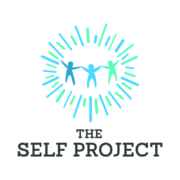Setting the Stage for a New School Year
For many kids and parents, it can be an enormous challenge to head back to school in the fall. (If you missed it, check out this post about the emotional transition back to the school routine). If you’re the parent of a middle or high school student, this transition can be more overwhelming given the increased independence your student is expected to develop (or have). The move from parental involvement to letting kids manage their own time and homework load can be hard for students and parents alike. Knowing when to back off and let kids learn from their own mistakes and when to step in and set strict guidelines for phone and tablet use is tricky, to say the least.
One way to help your student develop some self-awareness around how distractions may or may not be affecting their academic performance is to have them track their time. I think that starting this exercise with a definition of their own personal goals and values is important, so you could encourage them to either jot down some answers to this on their own or, if they are willing, sit with them and talk about their answers.
- What are my goals for this school year? They can be anything from getting a certain GPA to becoming more proficient in a foreign language to really mastering algebra. These can also include athletic or other extracurricular goals, but it is important to ensure that there are some academic goals on this list.
- What are my longer-term goals? These can vary from getting into a good high school to finishing high school with a few college acceptance letters. They may also include graduate school plans or ideas about what kind of career your student wants, although it is vital to remember that 5 or 10 year goals need to be flexible because there is no way to anticipate what might happen.
- What are my most closely held values? Often, once we get started listing our values, it can be hard to stop. If that is the case here, let your student write as many down as they want to and then choose the top three for purposes of this exercise. Examples might be persistence, courage, excellence, family, hard work, community.
- How am I spending my time? Does it reflect my values and goals? This is where the rubber meets the road. Over the first two to three weeks of school, have your student simply track how they spend their time. Certainly, as they do this, it will be extremely difficult for them (and maybe you, too) to not judge or criticize, but do your best to resist the temptation to do so. Simply looking at how much time they spend playing video games, texting friends, watching TV, practicing piano, doing homework, speaking French, etc. offers them a window into whether or not they are actively choosing to engage in pursuits that further their goals. If they are spending far more time in recreational activities than they are working on their goals, have them spend some time reflecting on what that means. Does it mean the goals aren’t all that important, after all? Or are they simply doing these things out of habit? Where can they shore up their efforts to really live their values and move toward their goals? Or do they need to change the goals?
This exercise is good for all of us to do once or twice a year. We can so easily get sidetracked by unexpected events or transitions or simply fall back into old habits that it benefits us all to check in with ourselves every once in a while and make sure that we are living our values. And maybe if our adolescents see us doing this, they will come to understand its importance.








Trackbacks & Pingbacks
[…] year, I wrote this post about setting goals, but in the spirit of knowing that rarely does one size fit all, here is a […]
Leave a Reply
Want to join the discussion?Feel free to contribute!